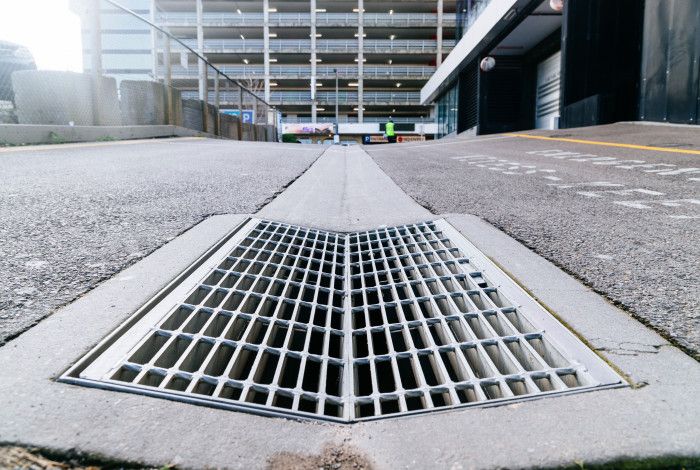Intense rainfall occurring within a short duration can cause flash flooding. This type of flooding is usually hard to predict, as it is highly localised and occurs with little advanced warning. Flash flooding occurs when rainfall exceeds soil infiltration capacity and/or the capacity of the drainage system.
Overland flow flooding
Overland flow flooding occurs when the capacity of the drainage system is exceeded by the volume of stormwater runoff within the catchment. As drainage systems are only designed and constructed up to a certain capacity, the drainage systems are expected to flood over certain storm severity. Recent developments are designed to ensure overland flows for storms up to 1 in 100 years return period are contained within the roads however, this was not always the case and overland flows may impact on properties, dwellings and other buildings.
Provided the drainage system was designed in accordance with the relevant standards prevailing at the time there is no legal obligation on Council to undertake improvements to the existing drainage infrastructure.
Overland flow flooding may also occur as a result of blockage and/or obstructions in pits, pipes and other stormwater drainage assets.
The Stormwater Drainage Management Plan includes details of the management system that Council intends to implement to inspect, maintain and repair Council’s drains and ancillary assets for which it is the responsible drainage authority. Council’s management system aims to minimise to frequency of overland flow flooding originating from its drainage assets.
River flooding
River flooding is usually a result of widespread, prolonged rainfall causing water levels in a river, a creek or a stream to rise and excess water to flow over the banks of the waterbody. The excess water is then conveyed within the floodplain, the adjacent areas that would naturally be affected by flooding if a river rises above its banks. Associated flood risk is dependent on local topography, water levels, dwelling density close to the river and existing flood alleviation measures (e.g. levees).
Other sources of flooding, such a groundwater flooding and tidal flooding are not considered to be significant within the City of Greater Dandenong. Groundwater flooding is generally more of a nuisance than a safety hazard and tidal influence on water levels in watercourses within the municipality is considered minor.
Flood Protection Standard
In Victoria the 1 in 100 year Average Recurrence Interval (ARI) or 1 per cent Annual Exceedance Probability (AEP) flood is the current flood protection standard, which is used in providing flood level advice, in delineating land affected by flooding and setting requirements for most developments. The 1 per cent AEP event (for the particular locality being considered) has a probability of 1 per cent chance of being equalled or exceeded in any year and will occur, on average, once in 100 years.


